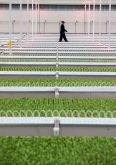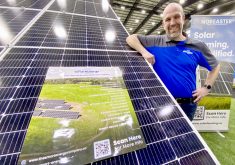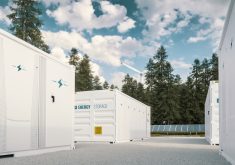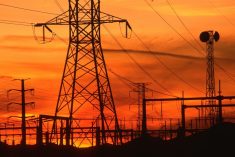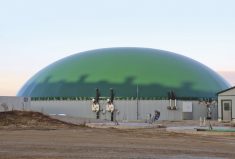The Independent Electricity System Operator (IESO) is looking to help fund energy-efficiency measures at Ontario greenhouses through a specialized call for proposals under its existing Grid Innovation Fund.
The arms-length Crown corporation responsible for Ontario’s electricity market recently published a new “Greenhouse Energy Profile Study,” which included the call for proposals.
Why it matters: This targeted program of the Grid Innovation Fund may open up new cost-sharing opportunities for greenhouse growers.
Read Also

U.S. agricultural trade in a widening deficit, study shows
U.S. agricultural imports now exceed exports and the deficit is expected to worsen, according to a study from the University of Illinois.
The application period closes Feb. 14.
“With more than 1,300 megawatts of greenhouse load seeking to connect in Ontario by 2025, the province’s electrical infrastructure is being challenged to meet significant increases in the demand for power,” says the IESO.
Up to $2.5 million will be made available for “novel projects focused on reducing electricity demand from indoor agriculture during local and bulk system peak periods.”
“Energy efficiency is of key importance to our members, even more so as we transition to year-round production through the use of supplemental lighting,” says Ontario Greenhouse Vegetable Growers (OGVG) Science and Government Relations Manager Justine Taylor, when contacted by Farmtario. “Any program that supports efficiency measures has the potential to benefit the sector.”
Taylor says OGVG worked closely with the IESO as it prepared the Energy Profile Study. Among the findings of the study were that the greenhouse vegetable sector is expanding “at a record rate” in Ontario due to demand for local food, and “only 10 per cent of cannabis greenhouse space was being used to produce cannabis as of 2018 (but), by 2023, these facilities are expected to be fully operational.”
According to the IESO website, Grid Innovation Fund investments run a maximum of three years, with percentage cost coverage depending on the type of project.
The call for proposals isn’t just for greenhouse operators, but for any agency or company involved in the provision of electricity for greenhouse production — any project, the website states, that could “validate the performance and business case of promising new technologies, practices, and services… or otherwise accelerate the adoption of competitive cost-effective energy solutions.”
Taylor says greenhouse growers are already eligible for the IESO’s Industrial Conservation Initiative, through which they can decrease their overall electricity rate by limiting use during peak demand hours. But other programming to support efficiency in use as well as innovative electricity generation projects remain “of great interest to our growers.”
A number of innovations from around the world are highlighted in the recent study:
- Greenhouse-integrated semi-transparent solar photovoltaics: Not widely used in Ontario, research is underway in Asia and Europe to integrate solar photovoltaics into roof and shade screen construction at greenhouses, enabling them to simultaneously promote crop growth and generate solar power.
- Solar-assisted ground-source heating: Recent research from the University of Windsor revealed the possibility for a long-term decrease in mean ground temperature due to greenhouse-scale ground-source thermal pumps. A solar-assisted system can be used for ground temperature recharge.
- Advanced sensors and artificial intelligence, including sensors that will help detect and monitor moisture levels in the soil and air, humidity, ambient temperature, carbon dioxide, plant temperature, and photosynthetic ambient radiation, or robotic scouting systems to detect diseases, insect pests, deficiencies and other plant abnormalities.
- LED lighting: While, in the horticulture sector, double-ended high-pressure sodium (DE-HPS) lighting continues to dominate, growers are increasingly being encouraged to look past the fact that the savings claims made by manufacturers of light-emitting diode (LED) grow lights have not yet been fully validated in published research. LEDs are more efficient due to their directional light output. The study adds, however, that “there is a learning curve required for growers to switch from DE-HPS to LED,” and, in Essex County, the study suggests, the uptake of LED lighting “could have a greenhouse peak hour impact in the range of about 60 to 150 MW by 2024.”
- Demand response aggregators: One U.S. example uses a cloud-based platform to digitally aggregate all greenhouse energy assets, such as lighting and climate control, and works to reduce or avoid high use during elevated peak demand periods.




